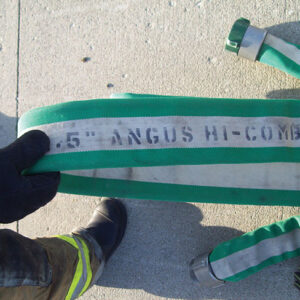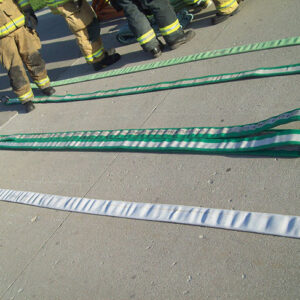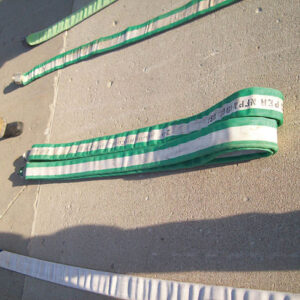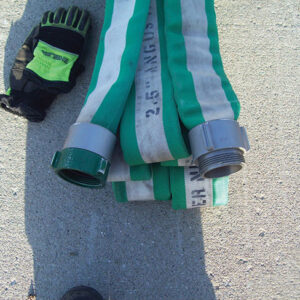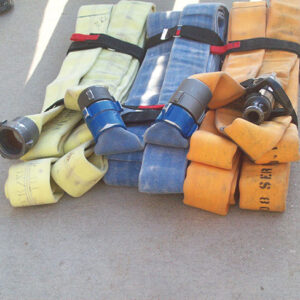
Features
Training
Back to Basics: Hose Packs, Part 2
November 22, 2023
By Mark van der Feyst
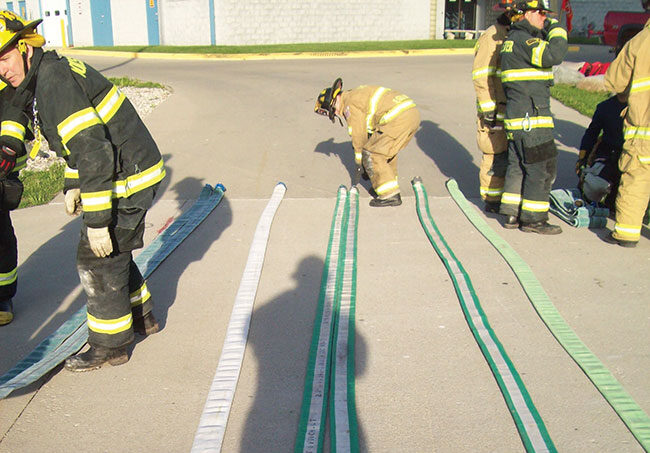 Photo 1: Prepare a New York load by laying your hose flat on the ground, with both couplings beside each other.
Photos by Mark van der Feyst
Photo 1: Prepare a New York load by laying your hose flat on the ground, with both couplings beside each other.
Photos by Mark van der Feyst Continuing our study into the different hose packs that we have available to us, this month we are looking at the New York load. As the name denotes, this load was developed by the Fire Department of New York (FDNY) and has been in service for many years as a staple in the FDNY’s tactical arsenal for hose deployment.
As with the Denver Load, there will be three bundles of hose packaged to make up the load. The three lengths of hose allow for adequate stretches from the standpipe to the floor below in most fire units. One length of hose is used to go from one floor up to the next, with the other two 30-metre lengths being used to advance to the fire unit or onto the fire floor. An advantage to three separate hose packs is that hose lengths can always be added on or decreased.
To pack the New York load, the hose is to be laid out flat on the tarmac or ground with both couplings opposite from each other. The first coupling will be picked up and placed alongside the other coupling, as seen in Photo 1.
An important step in this process is to orient the couplings for each of the three bundles in the same fashion to avoid connection issues later. For example, if looking at the hose from the middle of the fold in Photo 1, the female coupling will be on the left with the male coupling on the right. An easy way to remember this is to use the word “Fire Marshal,” with the letters “F” and “M” showing left and right for the couplings.
When the couplings are properly oriented, the middle of the hose is apparent and should be grabbed to be placed on top of the couplings. This section of the hose can be marked with a painted stripe or piece of electrical tape to help identify it when needed. In Photo 2, you will see the firefighter grabbing the middle of the hose, with Photo 3 showing this section placed atop the couplings. Positioning for the middle of the hose is important for ensuring proper deployments later.
As seen in Photo 4, from this position, the hose will then be folded again on itself, with attention needed to ensure the hose stays flat on top of itself during these folds. The hose is then folded in half again, but with the couplings portion grabbed and folded back on top of the other half. In the end, the hose bundle will look as shown in Photo 5.
Photo 5 shows what the middle of the hose with the two couplings pulled aside from each other looks like. The middle of the hose should be placed exactly on top of the two couplings, with each kept side-by-side with hose straps. Only two straps are required to bundle the package. One hose bundle will have a nozzle attached to it and will be assembled in the exact same way as the other two bundles, with the exception that the nozzle will be lying beside the female coupling.
Your hoses are deployment-ready when all three bundles are completed, as shown in Photo 6. With the nozzle bundle on the side going to the fire floor or fire unit, the couplings can be connected to each other, with the last female coupling going to the water source.
An advantage of the New York load is compact hose bundles, which can be stored in the side compartment of an engine or truck by stacking them atop each other. This also means ease of carry, with bundles able to be transported on one or both shoulders. This compact load can also be brough into elevators by being placed on the elevator floor, with the firefighters standing on top of them.
The New York load is an easy, simplistic load to fold, deploy and store on a fire truck.
Mark van der Feyst has been in the fire service since 1999 and is currently a firefighter with the FGFD. Mark is an international instructor teaching in Canada, U.S. FDIC and India. He is the lead author of Fire Engineering’s Residential Fire Rescue & Tactical Firefighter books. He can be reached at Mark@FireStarTraining.com.
Print this page
